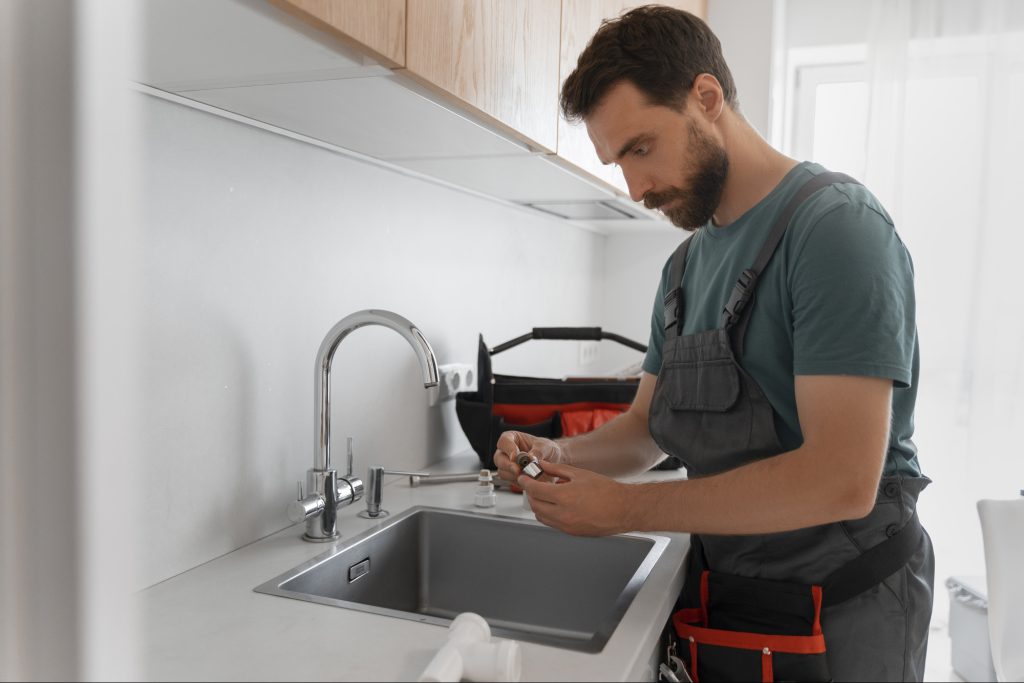A blocked sink can quickly bring your daily routine to a grinding halt. Whether it’s in your kitchen or bathroom, a clog disrupts more than just water flow—it adds stress, delays tasks, and sometimes even leads to unpleasant odours. But what happens when you don’t have a plunger handy?
Don’t panic. You’re not alone—many Sydney homeowners find themselves in this frustrating situation every day. The good news? There are easy, DIY methods that work wonders without needing a plunger or expensive tools. In this blog, you’ll discover effective ways to unblock a sink using common household items. Each method is safe, simple, and budget-friendly. Let’s get started and tackle that clog head-on!
Why Does Your Sink Get Blocked?
Knowing why your sink is blocked helps you choose the best fix and prevent future problems. In Sydney homes, clogs are most commonly caused by everyday habits that go unnoticed until it’s too late. Here are the top culprits:
- Grease build-up: Pouring cooking oils or fats down the drain may seem harmless, but they eventually cool, solidify, and cling to pipe walls, causing serious blockages over time.
- Food scraps: Small bits of food, especially starchy items like rice or pasta, can easily get stuck in pipes and trap other debris, forming a stubborn clog.
- Soap scum: Soap mixes with minerals in water and forms a sticky residue, which accumulates over time and contributes to blockages.
- Hair: This is especially common in bathroom sinks. Hair tangles up and binds with grease or soap, creating dense clumps that slow down drainage.
- Foreign objects: Items like bottle caps, cutlery, packaging, or kids’ toys can accidentally fall into the sink and go unnoticed until they cause a full blockage.
By understanding these causes, you can make smarter decisions when choosing the right fix—and prevent the problem from returning.
Signs Your Sink is Blocked (And Getting Worse)
A blocked sink rarely happens overnight. Often, there are early warning signs that, if caught in time, can save you from a full-blown plumbing disaster. Look out for the following:
- Slow draining water: If water is taking longer than usual to drain, it’s a strong sign that a blockage is forming.
- Foul odours: Bad smells coming from the drain often indicate rotting food or stagnant water trapped in the pipes.
- Gurgling or bubbling sounds: Strange noises can mean that air is trapped in the pipes due to a partial blockage.
- Water backing up: The clearest sign of a serious clog—if water starts pooling or overflowing, it’s time to act fast.
Recognising these symptoms early can help you take swift action and avoid needing professional intervention.
Easy At-Home Sink Unblocking Methods That Work
If you don’t have a plunger available, don’t worry! Try these five proven methods using common household items. They’re effective, easy, and suitable for most blockages.
1. Boiling Water and Dish Soap
This is one of the simplest and fastest methods. Start by squirting a generous amount of dish soap down the drain—especially a degreasing formula. Then, boil a full kettle of water and slowly pour it down. The soap helps to break down greasy residues while the hot water flushes the loosened debris away. For tough clogs, repeat the process two to three times.
2. Bicarbonate Soda and Vinegar
This chemical reaction is not only effective—it’s fun to watch! Pour ½ cup of baking soda directly into the drain. Follow it with ½ cup of white vinegar. Cover the drain with a plug or cloth to keep the fizzing action contained. Let it sit for at least 10–15 minutes, then flush with hot water. This method is especially good for breaking down organic material and soap scum.
3. Wire Coat Hanger
Grab a metal coat hanger and straighten it as much as possible, leaving a small hook at one end. Carefully insert the hooked end into the drain and twist it gently to catch hair or food particles. Pull out the debris slowly. Repeat the process until the water begins draining more freely. It’s a hands-on method but can be surprisingly effective.
4. Wet and Dry Vacuum
If you own a wet and dry vacuum, you can use it to suck out the clog. Set it to liquid mode and place a cloth or towel around the hose to form a tight seal at the drain. Turn the vacuum on at full power and let it pull the blockage out. Just make sure the vacuum can handle liquids before trying this.
5. Clean the U-Bend Trap
This is a bit more involved but incredibly effective. Place a bucket underneath the U-bend (the curved pipe under your sink) to catch water. Unscrew the trap slowly and remove any sludge, hair, or gunk inside. Once clean, reassemble the trap and run hot water to ensure the blockage is cleared.
Alternative Natural Solutions (Eco-Friendly Fixes)
Want to unblock your sink without harsh chemicals? Try these eco-friendly options that are gentle on your pipes and the environment:
- Salt and Baking Soda: Pour ½ cup of each down the drain. Let sit for 15–30 minutes, then flush with boiling water. Great for grease and minor clogs.
- Lemon Juice and Hot Water: The citric acid breaks down residue while leaving a fresh scent.
- Enzyme-Based Cleaners: These use natural bacteria to break down organic matter in your pipes. They’re safe for septic systems and highly effective over time.
Choosing natural methods helps reduce chemical runoff and keeps your Sydney home eco-friendly.
When Home Fixes Aren’t Enough – What to Do Next
Sometimes, even the best DIY solutions aren’t enough to fix the problem. If you’ve tried all the above methods and your sink is still blocked, the issue may be deeper in the plumbing system. Don’t risk damaging your pipes or wasting more time—call the experts at Plumbing Services Sydney. Our licensed plumbers use advanced tools like drain cameras and hydro-jets to locate and remove the most stubborn clogs. We’re available 24/7 and cover all Sydney suburbs.
Kitchen Plumbing Problems? We Can Help
Some sink blockages are a symptom of a larger issue within your kitchen plumbing system. Blocked pipes, old fittings, or improper installation can all contribute to recurring problems.
If you’re facing frequent sink blockages, it’s time to let professionals take a look. Our team at Plumbing Services Sydney provides full kitchen plumbing services, including pipe inspections, replacements, and preventative maintenance.
FAQs
What causes a sink to block without warning?
Gradual build-up of grease, soap, and food debris can cause sudden blockages once the pipe becomes fully clogged.
Can I use baking soda and vinegar more than once?
Yes. If it doesn’t work the first time, you can repeat the method. If it still fails, try another approach.
What’s the quickest way to unblock a sink without a plunger?
Boiling water and dish soap is the fastest and easiest method for breaking up grease-based blockages.
When should I call a plumber?
If you’ve tried multiple methods with no success or see leaks under your sink, it’s time to call in the professionals.
Wrap
Unblocking a sink without a plunger might seem tricky, but with the right approach, it’s totally doable. From natural cleaners to clever hacks using everyday items, these methods are simple, effective, and environmentally friendly. But when things go beyond a DIY fix, trust the professionals at Plumbing Services Sydney. We’re just one call away and ready to help restore your plumbing system to perfect condition—quickly, affordably, and with no mess left behind.




